BY: DANIELLE RATH
I’ve been studying energy drinks since 2003 and they continue to both fascinate and horrify me. They fascinate me because I’m a biochemistry major, or maybe it’s the other way around. Energy drinks are the reason I pursued my masters in food science (and the reason I survived grad school). Metabolic biochemistry is the closest I’ll ever come to engineering – for me, studying biochemistry is studying the secret rules to how things work.
Energy drinks horrify me because it feels like people with no science background are behind some of the products you can buy online. Sometimes I’ll read a label and think, “What are they doing? Who thought this was a good idea?” The most concerning aspect of energy drinks is we don’t have a proper nomenclature to classify them properly. (#WhatWouldIUPACDo?) Using the term “energy drink” the way we do is like calling pure ethanol “booze”. Let’s talk about why the lack of classification is a problem.
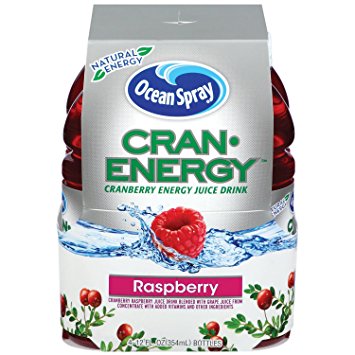
What makes an “energy drink” an Energy Drink?
If sports drinks all have hydrating liquids and electrolytes and if sodas all have carbonated water and flavoring, then all energy drinks have caffeine and _______. Let’s try to fill in this blank by looking at some of the most popular examples.
Red Bull, Monster, and Rockstar are the top three best-selling energy drink brands world-wide, with $4.5 billion dollars in US sales and $12.5 billion dollars worldwide from Red Bull alone in 2015 [1].

While Monster and Rockstar have similar formulas, it’s important to note their differences. For all the ire aimed at Red Bull, its formula looks rather boring compared to its competitors. Furthermore, it’s critical to note that there are several energy drinks that contain caffeine but none of the other ingredients in the table above. The other day I found “West Coast Chill Energy Drink”, which has no caffeine at all! That’s not how this works. That’s not how any of this works.
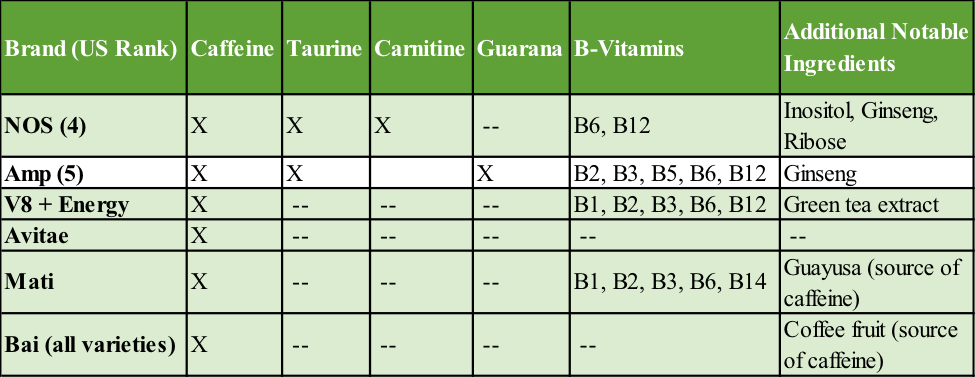
The lack of a common formula is why I find headlines like, “Energy Drinks Blamed for the Death of …” disturbing. We know how much caffeine an adult can have in a day (400 mg), and that combining alcohol and caffeine can have deadly consequences. But in terms of ingredient interactions, how can we possibly prevent this tragedy if we don’t know which ingredients were involved? To distinguish the hazardous from the healthy, we need to take analysis and descriptions of energy drinks one step further – to the ingredient level.
“That All things are poison and nothing (is) without poison; only the dose makes that a thing is no poison.” – Paracelsus, Father of Toxicology [translated from German] [2]
The Science of Energy Drinks in Disguise
Red Bull and V8 + Energy both contain 80 milligrams of caffeine. Why does one seem safer? More kid-friendly? Both make horrible mixers (because you should never-ever mix alcohol and caffeine. Ever.). Both have LESS caffeine than the 100-milligram maximum for kids under 18 year olds, proposed by the American Academy of Pediatrics. V8 + Energy is what I’d call an “energy drink in disguise”. Energy Drinks in Disguise often seem like healthy alternatives to the stereotypical energy drink. Is V8 + Energy a “safer” energy drink than Red Bull? We’d have to consider the ingredients to say for sure.
Caffeine
- Caffeine blocks adenosine, and adenosine makes us sleepy. Some people have a genetic mutation with their A2a adenosine receptor, which makes them inherently more anxious without caffeine, and thus more susceptible to feeling anxious after consuming caffeine from any source [3]
Green Tea Extract
- Green tea extract contains caffeine, antioxidants like epigallocatechin gallate, and theanine. L-theanine is an amino acid in green tea that is believed to reduce stress by inhibiting cortical neuron excitation. Some studies suggest L-theanine can reduce anxiety and blood pressure increases in high-stress individuals, but it’s not clear who would win in a fight between caffeine and L-theanine [4].
Taurine
- Taurine is a non-protein amino acid that was first isolated from ox bile (hence, ox – Bos taurus). The body makes taurine from amino acids cysteine and methionine. One of taurine’s functions is to conjugate with bile salts in the liver to help the body solubilize fats. Taurine also helps protect the heart. (What? An energy drink ingredient that’s good for the heart? Tell me more…) Taurine helps restore the right sodium/potassium balance in the body and the levels of calcium in the heart muscle cells. Calcium imbalances can lead to cell death and heart muscle damage. [4]
Caffeine Interactions
- When the European Commission’s Scientific Committee on Food examined the interaction between caffeine, taurine and glucuronolactone, they reported interaction was unlikely because of the differences in how these three are absorbed, distributed through the body, metabolized and excreted. Basically, this means caffeine, taurine and glucuronolactone stick to their own playbooks and do their own jobs, regardless of whether they were ingested at the same time.
- Caffeine and taurine both influence angiotensin II, which raises blood pressure. Caffeine augments the action of angiotensin II, but taurine tones it down. If there is an interaction between the two, taurine might reduce caffeine’s stimulating effects (like putting a leash on a Husky or driving with the emergency break engaged). This theory is suspected, not proven. [4]
B-Vitamins
- B-vitamins are like super heroes. They save us from colossal, incomprehensible destruction, but their super powers aren’t all equally impressive or helpful. For example, while B12 is the number one energy drink ingredient (yeah, it beat caffeine!) [4], it’s role is to team up with folate to make sure cells get enough DNA to mature and divide properly. In fact, the Recommended Dietary Allowance for B12 is based on the amount needed to make red blood cells. I’m not saying blood cells aren’t important for energy, but if your main source of B12 is a caffeinated beverage, you’ve probably got some bigger problems.
- Vitamin B5 is also a bench warmer super hero. It’s not that it’s not important – it helps Coenzyme A bring acetate to the Krebs cycle, which generates ATP – but no one has ever needed a B5 supplement. The vitamin is named after the Greek work pantothen, meaning wide-spread. Vitamin B5 is in so many foods, no one (excluding the malnourished) has ever suffered a B5 deficiency, so adding it to an energy drink is like putting a hula girl on your dashboard.
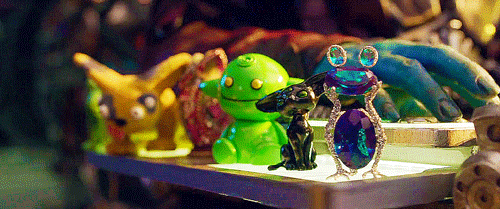
- If you wanted a super team of B-vitamins in an energy drink, you’d want to enlist thiamin, riboflavin, niacin, and B6. Thiamin participates in the metabolism of fats, proteins, nucleic acids, and especially carbohydrates. Riboflavin carries hydrogen atoms to the mother of all energy producing reactions, the Electron Transport Chain (think of how the wild dragons steel sheep to feed the mother dragon in “How To Train Your Dragon” – the hydrogen atoms are the sheep). Niacin participates in over 200 reactions – most of them to produce the chemical form of energy, ATP. B6 helps the body with gluconeogenesis – the conversion of stored glucose into ready-to-use, single-serve glucose units for quick energy.
The breadth and depth of what makes an energy drink safe could fill a small book – like the one I wrote [4]. People should not accept any statements implying, “All energy drinks are (anything)”. They are too different, and the terminology too vague – much like the irksome term “natural”. Until someone can fund a massive double-blind, placebo-controlled study on all the possible ingredient interactions inside a single can of Monster or Rockstar, we should take solace in the simpler products like Red Bull and the Energy Drinks in Disguise like V8 + Energy.
Want to keep up with the conversation? Follow us on Instagram and Facebook for quick updates on seminars, events, and food science!
References
[1] Caffeine Informer Staff. “Top Selling Energy Drink Brands.” CaffeineInformer.com. N.p., 14 Mar. 2016. Web. <https://www.caffeineinformer.com/the-15-top-energy-drink-brands>.
[2] Anderson, Julia DeCarvalho. “Paracelsus.” Toxipedia.org. N.p., 12 Nov. 2013. Web. <http://www.toxipedia.org/display/toxipedia/Paracelsus>.
[3] Caffeine Informer Staff. “Caffeine, Anxiety, and Panic Attacks”.” CaffeineInformer.com. N.p., Web. < https://www.caffeineinformer.com/caffeine-anxiety-and-panic-attacks>.
[4] Robertson, Danielle. “Are You a Monster or a Rock Star: A Guide to Energy Drinks – How They Work, Why They Work, How to Use Them Safely.” Booklocker, Inc. Aug. 2012.
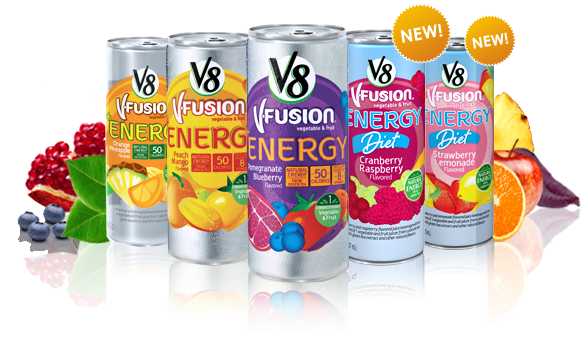



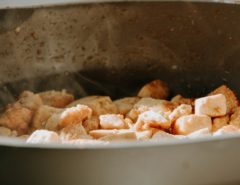

“Is V8 + Energy a “safer” energy drink than Red Bull? We’d have to consider the ingredients to say for sure.”
I wouldnt normally comment on something like this, but you ask this question, present facts, but never give us your conclusion. You’ve been studying energy drinks since 2003! I want to know what you think about the facts you presented, how dare you make me think with my own brain!
I also hardly think it’s fair to call “V8 Energy” an “energy drink in disguise”, without coming to a conclusion on whether or not it is in fact a healthier alternative to something like redbull. If it is healthier, then it is not a disguise. If it is not healthier, it is a disguise. That’s why I came to this article, to get an expert opinion on exactly that, the question you ask and never answer!
Sir…
It seems to me Danielle wants to advertise her book than to provide the reader a straight answer.